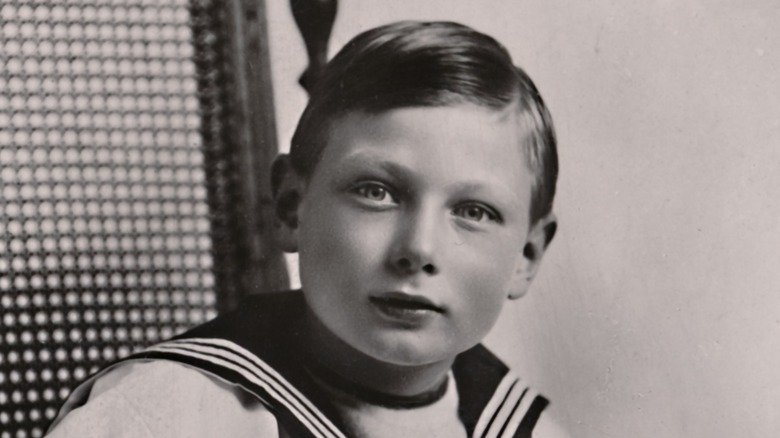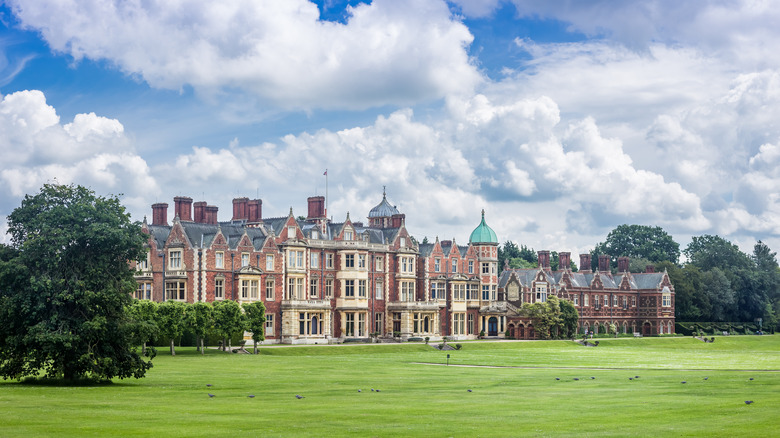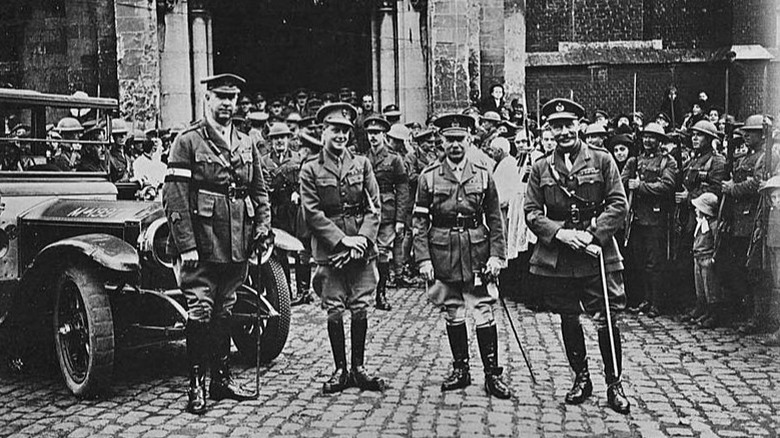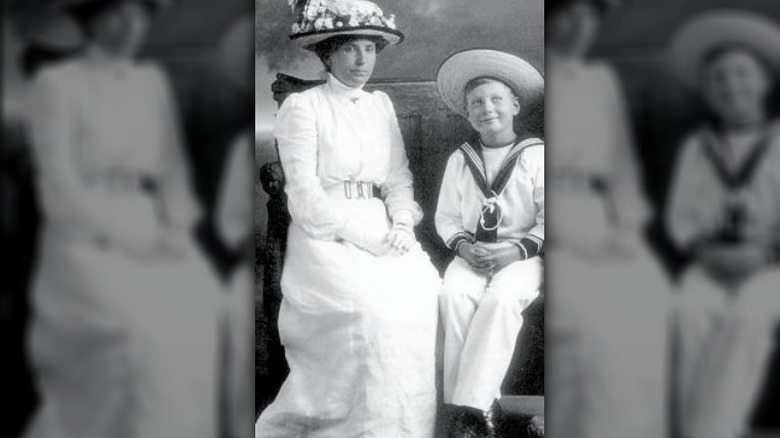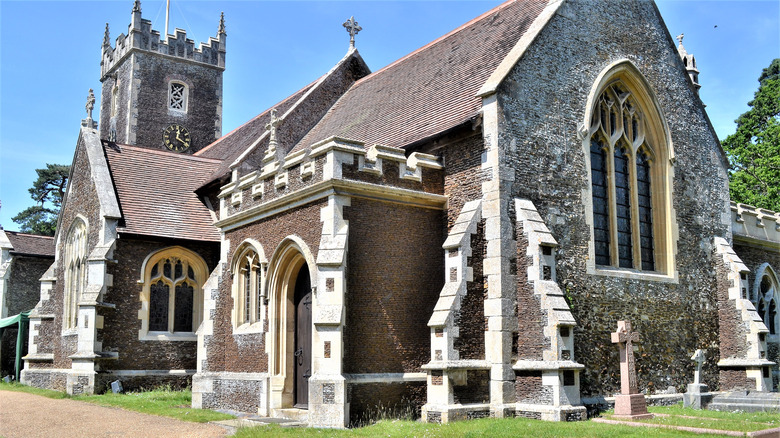The Tragic 1919 Death Of Prince John Of The United Kingdom
The British royal monarchy has been no stranger to tragedy within the family, and the premature death of Prince John is one of those tragic stories. Prince John was the grandson of King Edward VII, who gained the Second Star of Africa, which was eventually placed in Queen Elizabeth II's coffin crown during her funeral procession. Prince John's father was King George V, and the young prince was the youngest of six children. He was also an uncle of Queen Elizabeth II, as his older brother, the future King George VI, was Elizabeth's father (Royal Central).
Prince John was born on July 12th, 1905, at York Cottage on Sandringham Estate. This property came under the ownership of the British monarchy in the time of Queen Victoria in 1862 (via Sandringham Estate). Prince Albert Edward, (the future King Edward VII and son of Queen Victoria), received the house right before his 21st birthday and had the original hall demolished and rebuilt to accommodate his growing family. The countryside estate was far enough from British society that the royals felt like they could be free from their duties, which made it a suitable place for Prince John to grow up, given his future hardships ahead.
Prince John's health issues arise
As Prince John grew up, it became obvious that he dealt with serious health issues. He was described as a slow learner, and when he was 4 years old, he experienced his first epileptic seizure. According to Royal Central, researchers now think it's possible the prince had autism, which affected his learning abilities. In 1910, when King Edward VII died, his father King George VI ascended the throne, but due to Prince John's condition, he was not allowed to attend his father's coronation. However, he still retained his status as fifth in the line of succession.
In 1912, Prince George, Prince John's brother, attended St. Peter's Court Preparatory School at Broadstairs, and given that he was only 2 1/2 years older than Prince John, it was expected that the younger prince would do the same. However, when the royal family stated that he would not attend the same academy, the public became suspicious of Prince John's health and well being.
Family absence
On July 28th, 1914, World War I broke out across Europe, and as a result, the British royal family became more absent from Prince John's much-needed care as they were consumed with the country's military effort. King George VI and Queen Mary often visited the soldiers at the Western Front and tended to wounded soldiers, according to East Sussex WWI. Meanwhile, Prince John's siblings were also heavily involved in the ongoing warfare.
Prince Edward, the heir apparent to the throne and Prince John's eldest brother, enlisted in the army with the intention to fight on the front lines of the war itself. However, the Secretary of War at the time, Lord Kitchener, refused to allow the crown prince to put himself in such mortal danger, given he was destined to be king one day. Even with the pressure against him, Prince Edward did fight in the trenches and witnessed combat during the war. Another brother, Prince Albert, also enlisted in the navy and operated turrets, but had to resign his position due to health concerns.
Charlotte 'Lala' Bill
When Prince John was around 11 years old, his health continued to rapidly deteriorate. He had more seizures, and as they became more severe, the young royal was excluded even further from his family. He was relocated to Wood Farm, the farmhouse on Sandringham Estate, and the home of Charlotte "Lala" Bill, who was the royal children's favorite nanny.
Lala, as she was called by the children, came into their lives after the children dealt with an abusive nanny in their early childhoods. This was shown in "The King's Speech," where King George VI talks about his abusive nanny to his speech therapist (via History News Network). Prince Albert, King George VI's name before taking the throne, was often physically and emotionally abused by the nanny. He was often pinched to the point where he would start crying right before he was handed to his parents, who would immediately have the nanny take care of him again — only to continue to be abused.
After three years of this behavior, the nanny was finally fired, and Charlotte Bill came into their lives — and she was adored by the children (via Express).
Death of Prince John
As Prince John faced more frequent and worsening seizures, physicians in the royal family started to doubt that he would live past childhood. The other royal children became very saddened by their brother's deteriorating conditions, with Charlotte Bill writing, "we [dared] not let him be with his brothers and sister, because it upsets them so much, with the attacks getting so bad and coming so often." On January 18th, 1919, the young prince died from a seizure in his sleep, living to the age of 13 (via Royal Central).
The public was informed of his death two days after, and it was the first time any publication had mentioned he had a severe form of epilepsy. On January 21st, 1919, his funeral was held at St. Mary Magdalene Church at Sandringham Estate, where he was buried. His family was deeply hurt by the death of Prince John, and Queen Mary wrote in her diary, "a great shock, tho' for the poor little boy's restless soul, death came as a great relief. I broke the news to George and we motored down to Wood Farm. Found, poor Lala very resigned but heartbroken. Little Johnnie looked very peaceful lying there."
